Feminist science fiction is a subgenre of science fiction focused on such feminist themes as: gender inequality, sexuality, race, economics, reproduction, and environment. Feminist SF is political because of its tendency to critique the dominant culture. Some of the most notable feminist science fiction works have illustrated these themes using utopias to explore a society in which gender differences or gender power imbalances do not exist, or dystopias to explore worlds in which gender inequalities are intensified, thus asserting a need for feminist work to continue.
Science fiction and fantasy serve as important vehicles for feminist thought, particularly as bridges between theory and practice. No other genres so actively invite representations of the ultimate goals of feminism: worlds free of sexism, worlds in which women's contributions are recognized and valued, worlds that explore the diversity of women's desire and sexuality, and worlds that move beyond gender.

Alice Bradley Sheldon was an American science fiction and fantasy author better known as James Tiptree Jr., a pen name she used from 1967 until her death. It was not publicly known until 1977 that James Tiptree Jr. was a woman. From 1974 to 1985, she also occasionally used the pen name Raccoona Sheldon. Tiptree was inducted into the Science Fiction Hall of Fame in 2012.
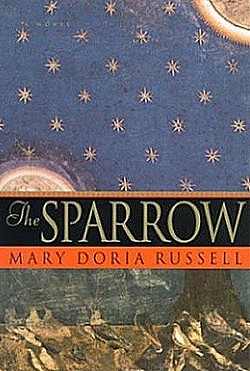
The Sparrow (1996) is the first novel by author Mary Doria Russell. It won the Arthur C. Clarke Award, James Tiptree Jr. Award, Kurd-Laßwitz-Preis and the British Science Fiction Association Award. It was followed by a sequel, Children of God, in 1998. The title refers to Gospel of Matthew 10:29–31, which relates that not even a sparrow falls to the earth without God's knowledge thereof.
"Love Is the Plan the Plan Is Death" is a short story by James Tiptree, Jr., a pen name used by American writer Alice Sheldon. It won a Nebula Award for Best Short Story in 1974. It first appeared in the anthology The Alien Condition, edited by Stephen Goldin, published by Ballantine Books in April 1973.

Camouflage is a 2004 science fiction novel by American writer Joe Haldeman. It won the James Tiptree, Jr. Award in 2004 and the Nebula Award for Best Novel in 2005.

Crown of Stars is a posthumous collection by American writer James Tiptree, Jr., containing unpublished short stories and those published in the final years of her career. All but one of the stories had previously been published elsewhere, in Science fiction magazines or anthologies. It is copyrighted to “the Estate of Alice B. Sheldon” and was first published in 1988 by Tom Doherty Associates. Crown of Stars is 340 pages in length and contains ten short stories.

Up the Walls of the World is a 1978 science fiction novel by American author Alice Sheldon, who wrote under the pen name of James Tiptree, Jr. It was the first novel she published, having until then worked and built a reputation only in the field of short stories.
The Catteni series is a tetralogy of science fiction novels by American writer Anne McCaffrey. In this universe, humans are slaves of aliens, the humanoid Catteni. Woven through all four of the books are details of the relationship between Kristin Bjornsen, a former slave, and Zainal, a renegade Catteni.

Learning the World is a science fiction novel by British writer Ken MacLeod, published in 2005. It won the 2006 Prometheus Award, was nominated for the Hugo, Locus, Clarke, and Campbell Awards that same year, and received a BSFA nomination in 2005. Since the book's publication MacLeod has written two short stories set in the same universe, "Lighting Out" and "Who's Afraid of Wolf 359?".
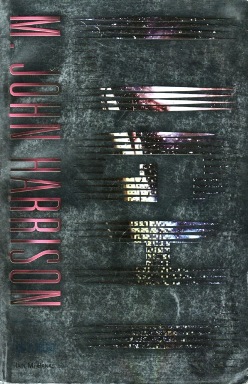
Light is a science fiction novel by M. John Harrison published in 2002. It received the James Tiptree, Jr. Award and a BSFA nomination in 2002, and was shortlisted for the Arthur C. Clarke Award in 2003. The Guardian ranked Light #91 in its list of 100 Best Books of the 21st Century.
Mac Tonnies was an American author and blogger whose work focused on futurology, transhumanism and paranormal topics.

Grass is a 1989 science fiction novel by Sheri S. Tepper and the first novel from the Arbai trilogy. Styled as an ecological mystery, Grass presents one of Tepper's earliest and perhaps most radical statements on themes that would come to dominate her fiction, in which despoliation of the planet is explicitly linked to gender and social inequalities.
Darcy S. Pattison is an American writer of fiction and nonfiction children’s literature, a blogger, writing teacher, and indie publisher. Her books have been translated into nine languages. Although she is best known for her work in children’s literature, she is also a writing teacher traveling across the nation presenting her Novel Revision Retreat. She has been featured as a writer and writing teacher in prestigious publications such as Writing Young Adult Fiction For Dummies, and 2012 Writer's Market. Pattison is also an independent publisher of ebooks for adults in the educational market.
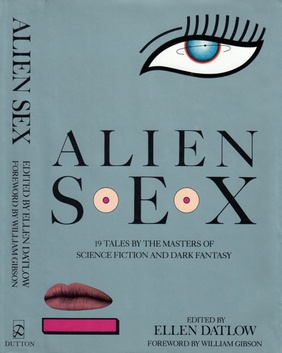
"And I Awoke and Found Me Here on the Cold Hill's Side" is a science fiction short story by American author James Tiptree, Jr. Originally published in The Magazine of Fantasy & Science Fiction, the short story has been republished in several anthologies.

The Saga of Shadows is a trilogy of space opera novels written by Kevin J. Anderson. First announced in 2011, it is a sequel to Anderson's seven-book series, The Saga of Seven Suns (2002–2008). The first novel, The Dark Between the Stars, was released by Tor Books on June 3, 2014. The second book in the series, Blood of the Cosmos, was published on June 2, 2015. The third novel, called Eternity's Mind, was released on September 13, 2016.
Anna-Marie McLemore is a Mexican-American author of young adult fiction magical realism, best known for their Stonewall Honor-winning novel When the Moon Was Ours, Wild Beauty, and The Weight of Feathers.
Pat Schmatz is an American author of young adult fiction and middle grade fiction, best known for their James Tiptree Jr. Award winning novel Lizard Radio. Other of their well-known and award-winning works include Bluefish and The Key to Every Thing.
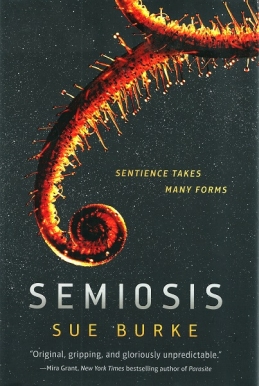
Semiosis is a 2018 science fiction novel by American writer and translator Sue Burke. It is her debut novel and is the first book of her Semiosis Trilogy series. It was first published in February 2018 in the United States by Tor Books, and in August 2018 in the United Kingdom by HarperVoyager. The book was translated into French by Florence Bury, and published in France in September 2019 by Albin Michel.

The following outline is provided as an overview of and topical guide to extraterrestrial life:
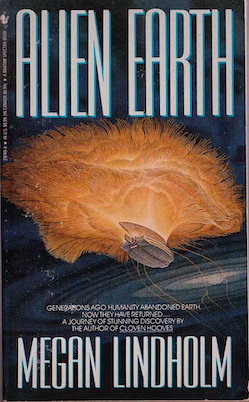
Alien Earth is a science fiction novel by American author Megan Lindholm, published in 1992 by Bantam Spectra. A French translation has been released. In the United States, it went out of print in 1992 and was unavailable until an ebook edition was released in 2011.













